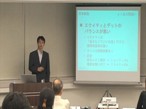Issue management: What is a garbage collector?
Hello. This is Irino, a strategy consultant. I have been involved with various project management like a merger project of more than 15,000 man-month, a system development project of 2,000 man-month and launching a new venture business.
“Don’t you have a template for Issue management chart?”
I get this question often, so I will summarize the important points to keep in mind regarding Issue management and provide you an Issue management chart for downloading.
The positioning of Issue management
- Background of the project
- Goal
- Scope
- Schedule
- Master schedule
- Project phase
- WBS (Work Breakdown Structure)
- Project structure
- Organization chart
- Role
- Meeting structure
- Project budget
- Cost estimates
- Quantitative effect
- Qualitative effect
- Project management process
- Progress management
- Issue management
- Quality control
- Fault management
- Document management
- Risk management
- Scope management/Change management
- Budget management/Procurement management/Contract management
- Management form sample etc.
Documents made for planning projects vary depending on companies and projects. In general, companies refer to pages 1 to 7 as “project plan documents “. However, some companies refer to pages 1 to 6 as “project plan documents” and refer to page 7 as “project management plans”. At any rate, “Issue management” is considered a part of Project management process. I will explain about pitfalls which PMs and PMOs tend to be trapped into and briefly summarize secrets of Issue management.
I sometimes come across Issue management charts which the deadline fields are left blank. This is not because those who made the charts don’t understand the importance of keeping the deadline, but because in many cases, those in the position of making the Issue management charts actually can’t adequately set deadlines. A countermeasure for this tendency as far as project management goes,
- Make it a rule not to leave deadline fields blank.
- Always consult with PMOs in case there are tasks which deadlines can’t be decided.
- Tasks with unset deadlines will be entrusted to PMOs for them to set.
Tasks without set deadlines will never be done, so it’s important to make sure they are managed thoroughly.
- Only team names are indicated.
- Only names of team leaders who are directing tasks are written.
I often come across Issue management charts like these. I know it’s a good rule of thumb to specifically indicate names because this will make people feel responsible and feel healthy pressure. By doing this, a lot less projects will remain unattended or delayed. Even if you are using outside companies like SIer, it’s a good idea to be able to specify the names of the people. Tasks are like baseball. How the game become can be expected only when we hear the field players’ name.
For example, there are Issue management charts which has 200 tasks. There is a limit to the number of tasks one can understand well and effectively handle. Let us remember that the maximum number of tasks one PM can handle is about 50. Issue management charts tend to become too long because tasks and memorandums are all included in them.
About “issues≒tasks”,
- Transfer tasks to WBS instead of putting them on Issue management charts.
- However, at the launching phase of a project, there are many cases in which the definition of WBS is immature, so as a temporary measure, issues are allowed to be included on Issue management charts.
About “issues≒memorandums”,
- If the purpose is to make sure the person who is giving issues not forget, share the list with the person himself and the person in charge of reviewing.
- If it has to be shared and understand by people in and outside of your company, E-mail to the team/individuals or prioritize the issues and put them on Issue management charts.
It is very common that you can choose “low-level”, “middle-level” or “high-level” in Issue management priority. But in reality,
- There is an excess number of “middle-level” tasks.
- It’s hard to prioritize the “middle-level” tasks to determine which ones to work on first.
- “Middle-level” tasks tend to be troublesome.
As a countermeasure, it is advised to use a numbering system. Something like this.
| Priority 1 | Priority 2 | Task |
|---|---|---|
| middle | 10 | ○○○○○○ |
| middle | 20 | ○○○○○○ |
| middle | 30 | ○○○○○○ |
| middle | 40 | ○○○○○○ |
| middle | 45 | ○○○○○○ |
| middle | 50 | ○○○○○○ |
The point is
- Instead of just classifying into the three levels, give each task a prioritized number.
The three level classification is OK. If you are going to use this system, then prioritize the tasks that belong to the same level and give them numbers like “10” or “20” so you can easily know which task to work on next. - Stop reporting in order of task ID numbers and report progress in order of priorities.
I often witness weekly reports being given mechanically in order of task ID numbers, but task IDs have nothing to do with the actual priorities, so this is not recommendable. It’s more effective to discuss Issue management charts in order of the priorities rather than task IDs in your weekly progress meetings. You can just put the IDs on the right hand corner of the charts. - Make sure your numbering system is easy to squuze into.
For example, it’s better to number tasks with 10,20,30 instead of 1,2,3. If you get another task, then you can squeeze another number in.
It is common to make “deadline” columns in Issue management charts. However, I often come across cases that only have deadlines for completion. When it comes to managing project, “by when you will get started on a task” is more important. The reason is because
- The main cause for a task delay is not starting on time to begin with.
80% of task delays are not because the speed of execution was slow, but because they were started too late. Those who are chosen to take part in projects are usually earnest and if they get to start working on their projects on time, then they usually will finish them before deadlines. - You will know what to do only after getting started.
We often find out how difficult tasks are after we get started and if we start late, then it will take that much longer to solve them. - It could be too late if only deadlines for completion are managed.
When the alarm goes off to let us know the deadlines for completion have been exceeded, it’s too late. After that, the only thing you can do is take second moves.
So, make sure you include deadlines for both “starting” and “completing” tasks in your Issue management charts.
There are many tools for managing tasks like Excel, Access and other project management applications. However, I would say that all task management tools available on the market are not that much different quality wise.
- How well project members can use the tools
- Costs for tools
- Manours and time necessary for installing tools
The balance of these elements is important and depends on the company and each project. So, try not to overly stick to a tool from one vendor.
What needs to be avoided in Issue management is postponing them. Especially, when it comes to waterfall style system development projects, there will be a big damage to latter processes if you postpone tasks. Therefore, there are some PMs who take about two weeks for taking inventory of tasks between each phase in order to have project members intensively work on solving and finishing remaining tasks. Experienced entrepreneurs do not like to postpone tasks even if it means the start of the next phase is going to be delayed.
What I mean by “standards for solving tasks” is how to go about deciding whether tasks have been completed. When you leave the judgment up to each project member, they tend to come up with a partially optimized solution in a small group like a member or a team. One job of PMs that give them added values is to provide fundamental solutions with the entire projects or the companies in mind.
You can’t grasp how tasks are progressing just by looking at Issue management charts. Especially, you can’t tell
- If a member is demotivated
- Members are not getting along
Things of this nature are rarely reported in Issue management charts. Advanced entrepreneurs know from experiences that it’s hard to tell tasks that require a lot of effort just from looking at the Issue management charts. They go to worksites or attend meetings they weren’t scheduled to take part to see and try to feel unspoken messages from expressions of team members.
“A garbage collector” is something who collects tasks’ problems which will not be solved. I have seen a phenomenon in which teams don’t assume responsibility for tasks and blame other teams for not working on their problems that actually needs to be adjusted together with other teams. A garbage collector processes and classifies tasks for each team and takes a lead in working out them. Experienced entrepreneurs sometimes make such garbage processing function inside PMO or make teams that work on common tasks. Guidelines for applicants of garbage collectors are
- Cleverness to understand tasks that are not in their lines.
- Leadership and high motivation to courageously get into each team and work with them.
- Stress tolerance to endure hard work
There are companies and projects that don’t have competent people who meet these guidelines. In that case, it might be necessary to make use of external human resource like consultants. If you are going to have people from within the company work as garbage collectors, then it is advised to select those who are involved in the projects and respected to a degree. It is realistic to choose garbage collectors from each team.
If you are interested in Progress management, then please read the following article.
↓
“Progress management: Is that WBS really Finish to Start?”
Project management plan: “How competent subordinates slack off”.
That’s it for today.
- A celebrity entrepreneur
- A managing director in a listed company
- A professor
- A rocket scientist
Looking forward to working with excellent leaders.
Please contact:
iphone: 090-6497-4240
irino@linzylinzy.com (Irino)
- One-two finish in the largest business plan contest in Japan
- One-two finish in Asian Entrepreneurship Award
- No.1 in google "business plan"
- Judge in the Cloud-Computing Awards
- Write/Review +100 business plans a year
- Meet +300 entrepreneurs a year
- Large-scale project management
e.g. +15,000 man-months post merger integration - Expertise: business planning, financing, IT, project management
- Fortune Global 500 companies:
bank, brokerage, card, SIer, etc - Startups:
IT, cloud, bio, cosmetics, minor metals, aerospace, etc - Tokyo University -> University of British Columbia -> Oracle -> Headstrong -> Independent
課題管理表のテンプレート
グループウェアや市販の課題管理ツールを使ったプロジェクトもありましたが、結局はExcelで、改定履歴などのシートを付けずに、ワンシートをシンプルに使うのが一番だと思っています。




